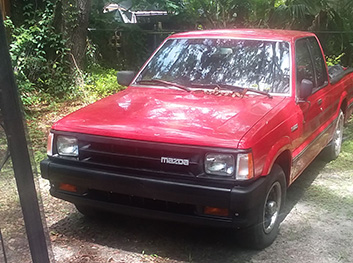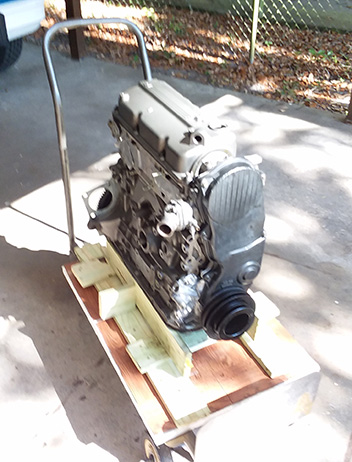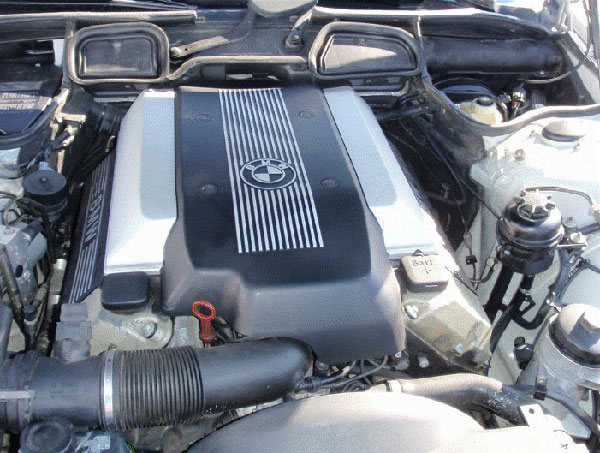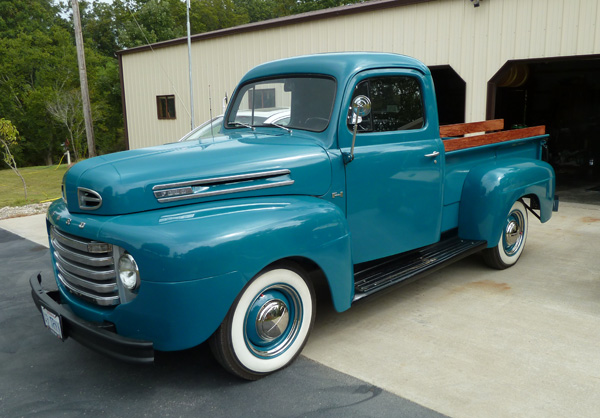Deckwar Tapered Shims in Action

1990 Mazda b2200

1990 Mazda b2200

2001 BMW 740IL

1949 Ford F1 with original 6 cylinder

1950 Packard standard eight sedan

1980 Toyota Celica with a late model 4.6L Ford 32 Valve Cobra V8 engine
(Photo by Dave Lindsay)
Order Now!
Place an order conveniently online -
visit our ordering page for more details.
If you have any questions, please contact us.
Testimonials
I am old enough to remember when the local auto parts stores stocked tapered shims. Now people are shocked when I tell them I am shimming the bearings to regain the factory specified bearing clearances. This used to b e common practice for everyday family cars, farm trucks and tractors when bearing clearances were slightly excessive. The bearings in my 1936 Packard were loose but not enough to justify removal and disassembly of the engine, machining the crankshaft, installation of new bearings, reassembly and installation of the engine. In 2 days I checked all the bearings with Plastigauge, installed the appropriate shim thickness, buttoned the engine back up, and test drove the car. The result? A quieter engine and improved oil pressure. This procedure worked in the 20's, 30's, 40's. 50's etc and when properly done still works today. Thank you for providing this product.
-John Pollock
Not only receive them on time, they work PERFECT!! I used them on a 1990 mazda b2200 that i rebuild for my daughter, its gonna be her first car. The engine now runs perfect thanks to your product.
-Ernesto Rubio
I used them in a waukesha FC motor main bearings, I couldn't get new ones and the Babbitt was still good but had excess clearance, used plastagauge to measure, quickly realized you need twice the thickness than you are taking up. Motor runs good and has good oil pressure. I don't know history of motor before I got it, but rod bearings were all worn out when I got it, looked like from lack of oil, probably because mains had excessive clearance, I was lucky to find rod bearings same size, just had to drill oil hole.
-Karl Monard
I have a 2001 BMW 740IL. The car has 154000 miles on it. It runs smooth, lots of power and compression is great. Spark plugs are a toasty golden brown. There is a lot of life left in this motor and in the car. A common problem with this model is the number 1 connecting rod bearing failure. I had a cold start rod knock and correctly guessed this to be the issue. It was noticeable only for about 3 seconds after start. This indicates the crank ware is not yet past the point of no return. This engine was a perfect candidate for bearing shim. Catching the rod knock demonstrating this critical evidence, being a cold start knock, is the perfect timing for a bearing shim. It generally means the bearing surface has only moderate ware with little or no scoring. As expected, I found the number 1 bearing to have a .007 clearance. The crankshaft was spotless and measured perfectly round. Once correctly shimmed, I now have .0015 give or take a little, which is spot on for the M60 engine. The rest of the bearings were well within tolerance.
I have done a number of engine shims, mostly in the 70's. It has proved to be a solid and economical way to extend the engine life provided the crankshaft is intact and the bearing has only moderate ware. It beats pulling the engine and an overhaul. I've never had an engine failure after correctly shimming one or more bearings. The key to a good shim is a close inspection of the bearing alignment slot post shim. It should be looked at after the cap has been installed for measure clearance measurement with plastigage. It needs to be tight and well formed deep into the slot to ensure the bearing doesn't spin. The fact your shims are tapered allow this to easily form. One other thing. My mentor, who was quite old in the 70's, told me to let the engine idle for 30 minutes to one hour after shimming. Avoid the urge to rev the motor on the first few starts. This gives the bearing time to seat under heat and light load before spinning the motor hard while driving. Sound advice.
Your kit, with incremental sizes was spot on for the job. I liked the way you packaged them. The rolled ends helped protect the shims. I figure if the engine lasts 500 miles, it's good for another 100,000. I already have about 300 on it, so it looks good.
-Terry Mummert
I used a shim to repair a spun rod bearing in a 5400 John Deere tractor. I polished the crankshaft and installed a new rod bearing with a .004 shim behind both halves of the bearing. Worked great. Runs good and saved me from having to remove the engine and replace the crankshaft.
-Jordan L Barnette
I know I’m happy with mine they saved me having my crank turned and saved me
some cash that I could use for some extra things I wanted to do.
-Bill Abernathy
I was using it to replace shims that came out when I removed a main cap to check it, and that’s working great and the car has good oil pressure, so the shim part of the operation was a success.
-Mike Timko
The shims worked great on my 235
blue Flame.
-Joe D. Wilson
I do want to tell you that I think you have a great product and your installation instructions are easy to use and your shims really work great! Thanks again I could not be happier.
-Bill Abernathy
Deckwar shims offer a great, cost effective alternative compared to machining down crank journal diameters when required to hold even ultra-tight clearance limits starting under 0.001” on late model / high tech engines.
-Al Kolenda
The item arrived in good order. Thanks. The shims worked great. I have an older 94 Chrysler T&C that I drive in the winter. The 3.8L engine dropped to zero oil pressure when at idle. Online I found other individuals with the same issue and no solution. Using Plastigage I was able to determine the mains had clearance issues. Using your shims solved the problem that would have cost big dollars using any other solution. Thanks for the great service.
-Don Johnson